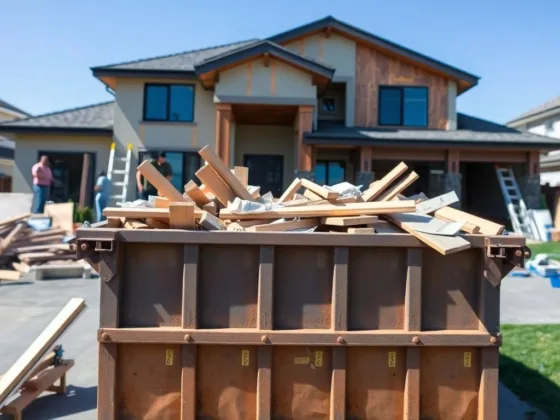Table of Contents Show
Whether you’re spring cleaning, renovating your property, or removing rubbish that has accumulated over time, you’re likely gearing up for a mammoth undertaking.
Rubbish removal is a labor-intensive task that can take a lot of time to do properly. It’s also a task that’s fraught with dangers if you don’t have a safety plan in place. So, be sure to take the steps below before starting your next rubbish removal project.
Step 1: Rent a Skip Bin
Depending on the scale of the rubbish removal task ahead, renting a skip bin can be an excellent first step toward a safe trash-clearing operation. Rather than letting trash accumulate in piles, where it can be a trip hazard, you can dispose of it directly into a skip for a company to collect once it’s full.
Renting a skip is fast and easy. You simply call a reputable company, provide them with an address for delivery, and fill it with your household waste. Some companies even show you how to fill it correctly before picking it up and disposing of your rubbish for you.
Step 2: Purchase Safety Supplies
Whether you’re cleaning up construction waste, household waste, general yard waste, or demolition waste, safety supplies are an unavoidable necessity. The type of supplies you need will depend on the kind of waste you have, but you can at least begin with heavy-duty gloves and steel-toed shoes.
If you’re working with construction waste, a few extra supplies will be necessary, such as hard hats, safety glasses, dust masks, earplugs, and safety shirts. It also wouldn’t hurt to visit your local grocery store to pick up cleaning supplies and extra-thick rubbish bags to help you complete the job to a high standard.
Read Also:
Step 3: Lay the Ground Rules
Laying the ground rules won’t be necessary if you’re removing rubbish from your property on your own, but it can be if you have a team of helpers. Make sure everyone is on the same page regarding how you wish to dispose of waste and the steps you’ll take to get the job done.
For example, you might put one person in charge of ensuring everything is organized in the skip to maximize the available space, with another person focused on handing them the waste.
Step 4: Use Equipment
Rubbish doesn’t always consist of light trash bags you can carry in one hand. Instead, you might have heavy, broken furniture and items that require multiple people to lift.
As tempting as it can be to rely on body strength to lift heavy items, consider using equipment that can ease the load. Dollies, hand trucks, and platform trucks are a few of the many helpful tools you can use to prevent unnecessary back injuries.
Step 5: Maintain a Clear Path
Injuries from tripping over are the last thing anyone needs when they’re trying to remove rubbish from their property. While your home might be in a state of chaos while spring cleaning gets underway, ensure you have a clear path for navigating trash through your home and out to a waiting skip bin or trailer for removal.
Consider disposing of trash through the most straightforward exit and ensure the doorways of each room are clear for safety purposes.
Removing rubbish can make you feel like you have your life in order, especially when you’re left with a clean, tidy, and organized home after putting in so much effort. If you want to ensure your next rubbish removal exercise goes off without a hitch, follow the safety steps above.










